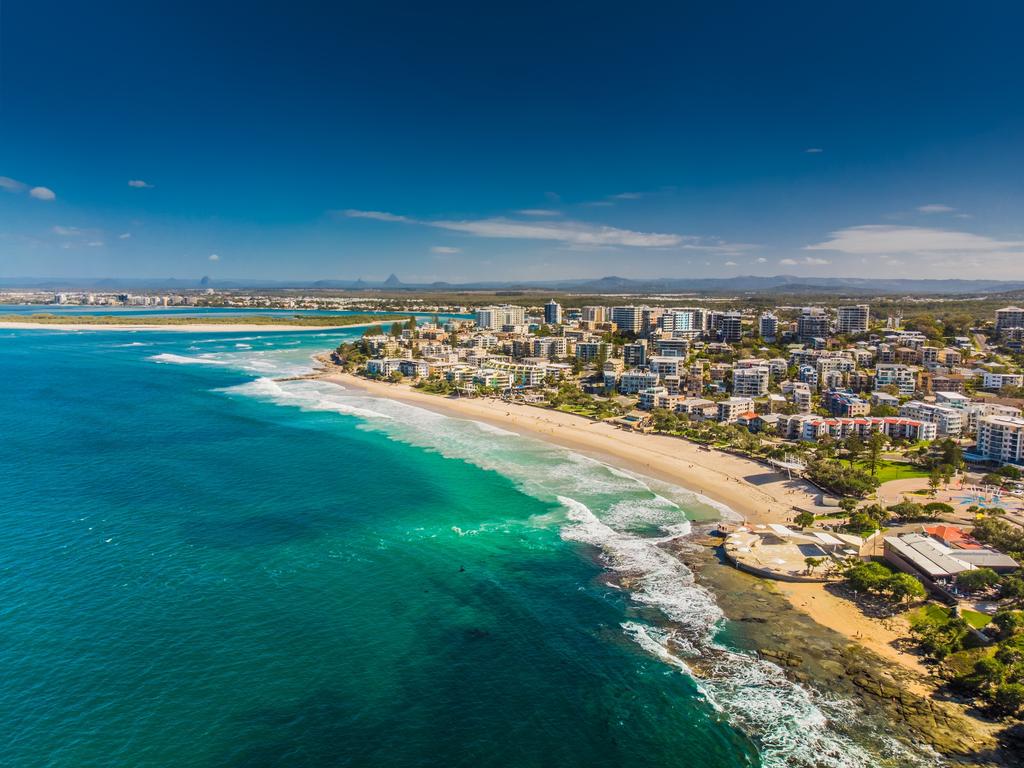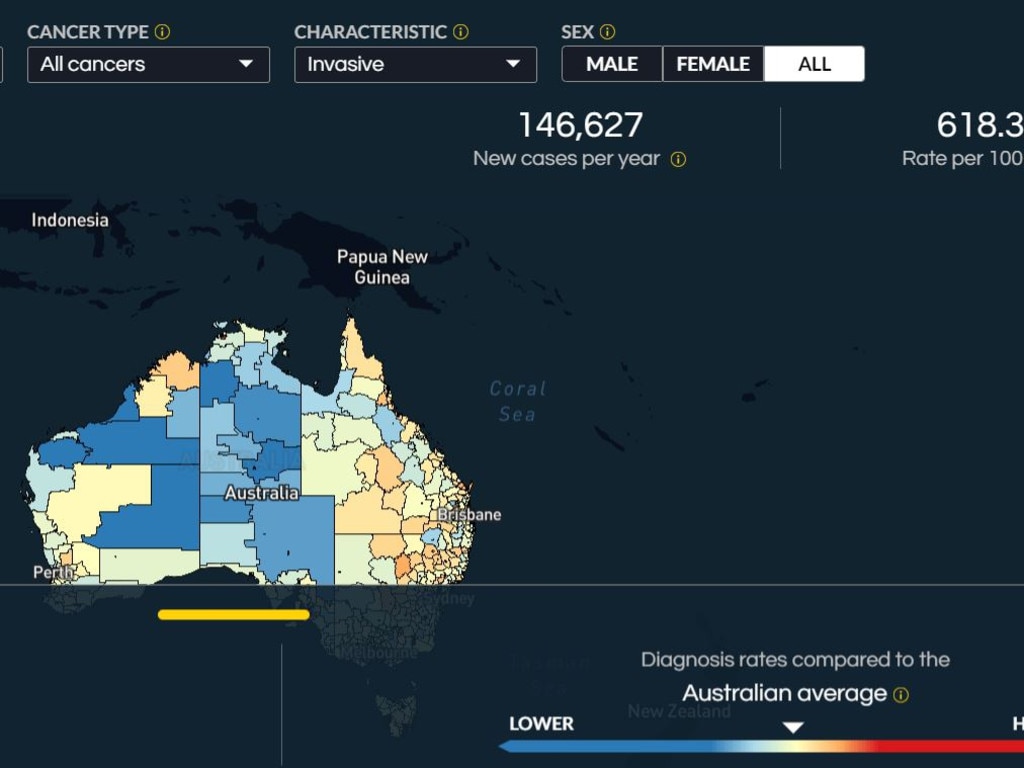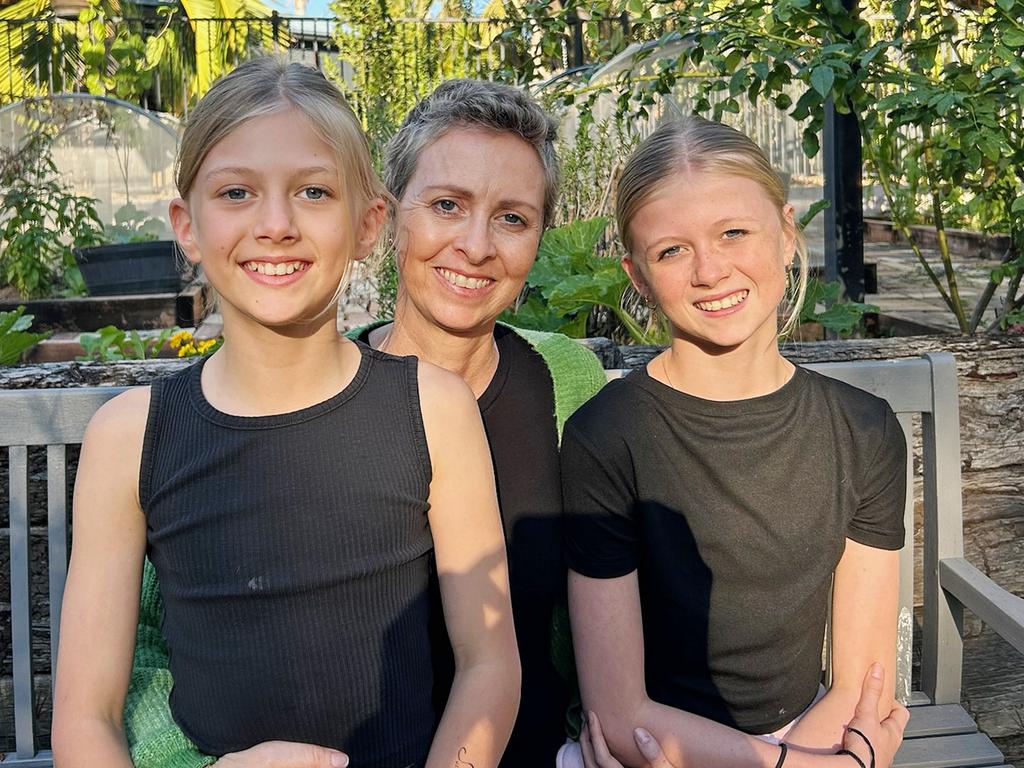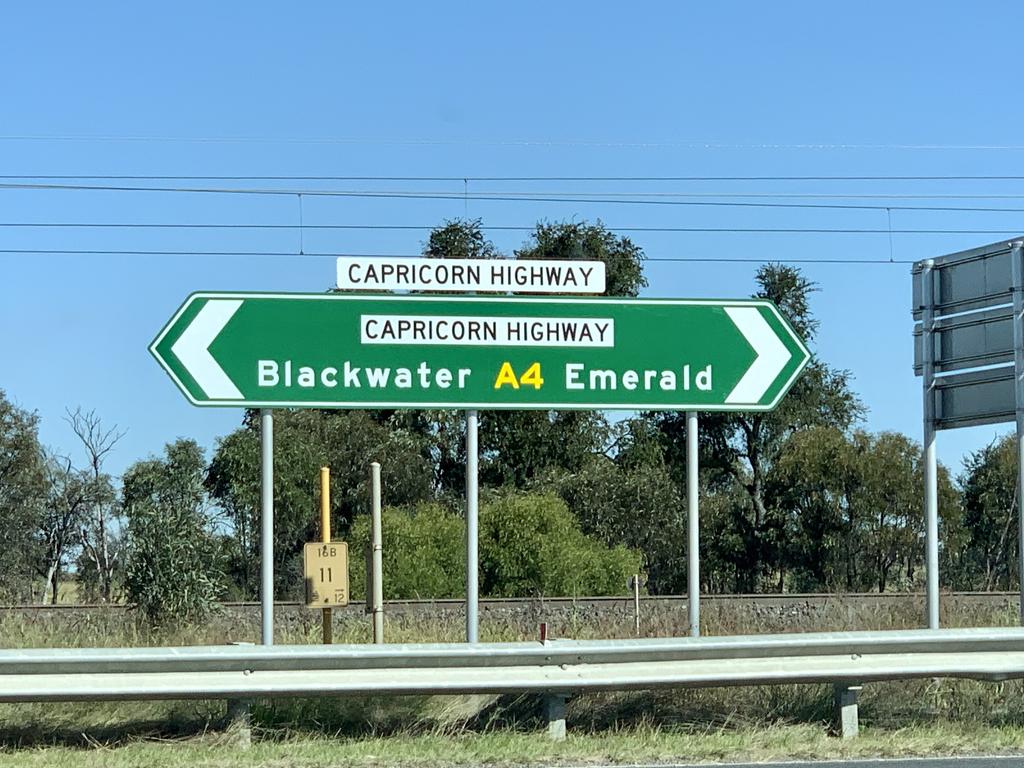World-leading maps shows the suburbs across Queensland that could be hotspots for cancer
Shock new data has revealed there are places in Queensland where people are almost 60 per cent more likely than the average Australian to be diagnosed with cancer. SEARCH FOR YOUR SUBURB
QLD News
Don't miss out on the headlines from QLD News. Followed categories will be added to My News.
Shock new data has revealed there are places in Queensland where people are almost 60 per cent more likely than the average Australian to be diagnosed with cancer – and your postcode can be a matter of life and death.
Concerning hotspots include Mackay – where cancer diagnoses are an eye-opening 57 per cent above the national average – as well as Berserker in Rockhampton and Bundaberg, which are 48 per cent and 45 per cent higher.
The findings from The Australian Cancer Atlas 2.0, exclusively released to The Saturday Courier-Mail, reveal that while regional postcodes generally suffer most when it comes to cancer, the disease is not always predictable and there are some startling hotspots.
Queenslanders in Indigenous communities are less likely to survive the disease, while patients in wealthy suburbs St Lucia, The Gap and Brookfield are more likely to survive.
The world-leading Atlas has been developed in the Sunshine State as a collaboration between Cancer Council Queensland and the Queensland University of Technology, and will now be used by researchers to understand why diagnosis and survivability rates spike in some areas.
“Now we have the data, the next step is understanding the ‘why.’ Once we do that, we can make informed changes to reduce these differences in cancer rates,” Queensland University of Technology Centre for Data Science Director, Distinguished Professor Kerrie Mengersen said.

“By using the Cancer Atlas along with the new Australian Cancer Plan, we can give policymakers, advocates, and communities the tools to make better health outcomes for all Australians.”
Between 2010 and 2019, cancer diagnoses in Mackay were 57 per cent above the national average, Berserker in Rockhampton was 48 per cent higher, Bundaberg 45 per cent, Kings Beach at Caloundra 26 per cent and Burpengary 25 per cent.
Five-year survival rates for the same period show the Torres was 36 per cent worse than the national average, followed by Palm Island (35 per cent) the Torres Strait Islands (34 per cent) and Northern Peninsula (33 per cent).
In contrast, the survival rate in leafy St Lucia in Brisbane was 48 per cent better than the national average, while The Gap was 40 per cent better and Brookfield – Kenmore Hills 38 per cent.
Kings Beach Caloundra is surprisingly in the top five locations for a cancer diagnosis.
Patients with prostate cancer who live in Gympie are 42 per cent less likely to survive than the average Australian while those in Noosaville have an 13 per cent better chance.
The Brisbane suburb of Ashgrove is in the top five hot spots for melanomas.
A melanoma diagnosis for residents of Scarborough has a higher survival rate than those living in Maroochydore, with one 39 per cent above the national average and the other 11 per above.
Research lead Cancer Council Queensland’s Professor Peter Baade said that the research demonstrates that the disparities faced by Australians living in regional and remote areas have not improved over time.

“While we don’t know the specific reasons for this gap, it is likely some combination of the behaviours of people living within those areas, along with availability and access to health services, contributes a substantial component,” he said.
“We hope this atlas motivates investigations to uncover more of these reasons.”
Prof Baade highlights that while the patterns vary for different cancer types there is a consistent trend that people living in regional and remote areas experience poorer survival rates than those living in metro and urban areas.

Reduced access to fresh, healthy, and affordable food, less access to safe places to exercise and lessened access to health care services for screening and early detection all contribute to the impact on cancer patients.
Higher rates of smoking and alcohol intake in the regions play a part.
“People living in lower socio-economic areas might be reluctant to see health professionals due to high costs, coupled with the current cost of living pressures,” he said.
“And those living in more remote and disadvantaged areas are less likely to participate in cancer screening services for breast, bowel, and cervical screenings due to lack of awareness and education, meaning cancers are likely to be diagnosed at a more advanced stage which is consistent with poorer survival.”
The experience of Sally Wallis and other breast cancer patients highlights the disparity in services for cancer patients in the regions.
Ms Wallis and other women from Emerald are driving a 600 km round trip to access chemotherapy.
“These women have no choice but to hit the road to Rockhampton and drive themselves. I am lucky in that my husband was able to take off work to drive me but not everyone has that luxury,” Ms Wallis, 47, said.
“After chemo you feel tired and full of chemicals and any doctor would tell you not to drive but when you live in regional areas you have no choice.”
On chemo day she gets her children ready for school, packs lunches then settles in the car for the 3.5 plus hour drive. When she completes her four hours of treatment she heads home again to her family.
The mother of two was diagnosed with Triple Negative breast cancer when she felt a lump in her breast.

“There is a BreastScreen van that comes to Emerald every year but the thing that is missing for those diagnosed with breast cancer is necessary information and personal support. I only found out after I’d had chemo and was on radiation that there is a lodge in Rocky where I could have stayed,” she said.
The mum said that the best thing for cancer patients in Emerald would be transport to take them to Rockhampton so that they don’t have to drive.
“I understand that when you choose to live remotely then you have to expect that not all health services will be available. But if we can’t get treatment at home then help us get to where we need to go,” she said.
“I am in the process of setting up a support group for women in Emerald who have been diagnosed with breast cancer so we can give each other moral support and share personal stories. That is important and something that is missing.”
Project Shirley, a research initiative designed by Pink Hope, no aims to empower breast cancer survivors and patients by providing a platform to share their experiences and insights.
The findings from this research will be used to raise awareness of the views of the breast cancer community and inform the development of support services to address any gaps in breast cancer care and management in Australia.
Dr Emilia Dauway is a breast cancer surgeon who lives in Brisbane but drives to Hervey Bay twice a month working weekends to provide breast cancer services to women who otherwise may not have the same care as those in metro areas.
“Regional patients have higher mastectomy rates and lower reconstruction rates than metropolitan patients,” she said.
The breast surgeons reports that patients have better survival rates when they receive cancer care closer to home.




